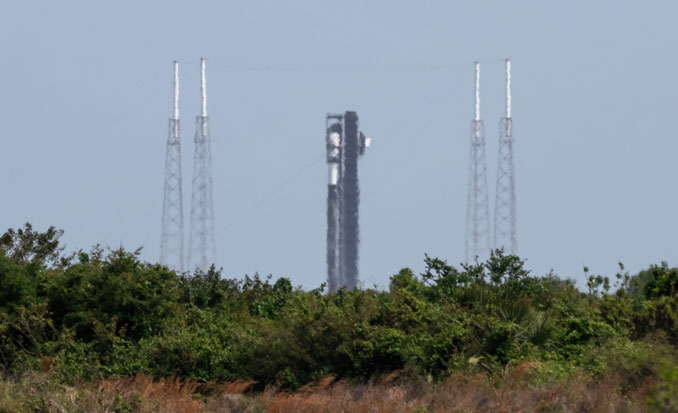Partial Cover Malfunction on Perseverance’s SHERLOC Instrument Impacts Mars Research
by Clarence Oxford
Los Angeles CA (SPX) Feb 15, 2024
NASA’s Perseverance Mars rover has encountered a hiccup in its quest to uncover the secrets of the Red Planet. The rover’s team is currently assessing an issue with the SHERLOC (Scanning Habitable Environments with Raman and Luminescence for Organics and Chemicals) instrument, crucial for detecting signs of past microbial life on Mars. A malfunction has left one of two dust covers intended to protect SHERLOC’s optics partially open, hampering the instrument’s ability to collect valuable science data.
Mounted on Perseverance’s robotic arm, SHERLOC employs a combination of imaging, spectroscopy, and laser technology to investigate organic compounds and minerals altered by watery environments. These are key indicators in the search for past microbial life. However, the engineering team noticed on January 6 that the cover’s improper positioning affects certain operational modes of the instrument, specifically its laser and spectroscopy functions.
Efforts to understand and rectify the issue have led to adjustments in the power supplied to the cover’s motor, aiming for a resolution that would allow the cover to fully close or open as needed. While this partial obstruction limits SHERLOC’s capabilities, the team has found a workaround for continuing some of its scientific endeavors.
The WATSON (Wide Angle Topographic Sensor for Operations and eNgineering), a color camera integral to SHERLOC, can still perform imaging microscopy by capturing close-up images of Martian rock grains and surface textures through an alternative aperture.
SHERLOC’s significance is underscored by its place within Perseverance’s suite of seven instruments, designed with redundancy in mind to ensure the mission’s objectives can be met even if an instrument fails. This suite includes other spectroscopy instruments like PIXL (Planetary Instrument for X-ray Lithochemistry) and SuperCam, providing overlapping capabilities that safeguard the mission’s scientific goals.
The rover, which landed on Mars on February 18, 2021, has recently achieved a significant milestone by marking its 1,000th Martian day, or sol, on December 12, 2023. This achievement comes more than 300 sols beyond its initially planned prime mission duration. Throughout its journey, SHERLOC has examined 34 rock targets, generating 261 hyperspectral maps that contribute to our understanding of Mars’ geological and potential biological history.
As Perseverance continues its exploration towards an area known as “Beehive Geyser,” the mission team remains hopeful that they can overcome this obstacle. The rover’s design, which draws on the legacy of the Curiosity Mars rover still operational after more than 11 years, includes a radioisotope power system that ensures its continued operation on the Martian surface. With its robust design and the mission team’s diligent problem-solving, Perseverance is well-equipped to continue its critical work in unraveling Mars’ mysteries, despite the challenges that arise.
Related Links
Perseverance Mars 2020 Perseverance
Mars News and Information at MarsDaily.com
Lunar Dreams and more




